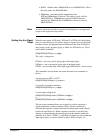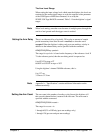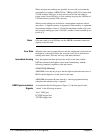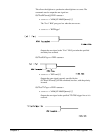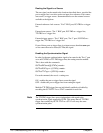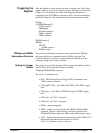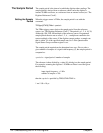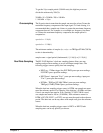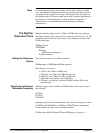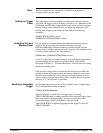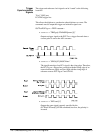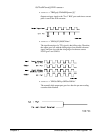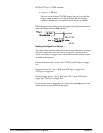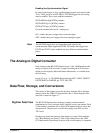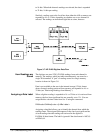
To get the 10 µs sample period (100 kHz rate), the digitizer processor
divides the reference by 200 (N):
20 MHz / N = 20 MHz / 200 = 100 kHz
1 / 100 kHz = 10
µs
Oversampling The Nyquist criteria states that the sample rate must be at least 2 times the
maximum frequency component of the input signal. To limit aliasing, it is
recommended that a sample rate 4 times or greater the maximum frequency
component be used. For example, to oversample at a frequency four times
or 10 times the maximum frequency component, the sample period is
computed as:
<period > = 1 / 4(f
c
)
<period > = 1 / 10(f
c
)
The minimum number of samples (i.e. <size > or TRIGger:STARt:COUNt)
to take is determined by:
sample count = signal period (fundamental) / [1 / 4(f
c
)] or [1 / 10(f
c
)]
Dual Rate Sampling TheHP E1429 digitizer’s dual rate sampling feature allows pre-arm
readings and post-arm readings to occur at different sample rates. The
following trigger sources specify dual rate sampling:
• DECLtrg - VXIbus trigger line ECLTRG0 paces pre-arm readings,
ECLTRG1 paces post arm readings.
• DEXTernal - input port "Ext 1" paces pre-arm readings, input port
"Ext 2" paces post-arm readings.
• DTIMer - TRIGger[:STARt]:TIMer1 paces pre-arm readings,
TRIGger[:STARt]:TIMer2 paces post-arm readings.
When the dual rate sampling trigger source is DTIM, one sample rate must
equal the reference period. For example, if the digitizer’s 20 MHz oscillator
is used, one sample rate must be 50 ns. Similarly, if VXI CLK10 is used,
one sample rate must be 100 ns (1/10 MHz). If the reference source for
DTIM is ECLT0, ECLT1, or EXT2, one rate must be equal to the reference
period. The other rate can be any other valid sample rate given the reference
source.
When the dual rate sampling trigger source is DECL or DEXT, both
sampling rates can be any periods you choose.
Chapter 3 Understandin
g
the HP E1429 Di
g
itizer 123



